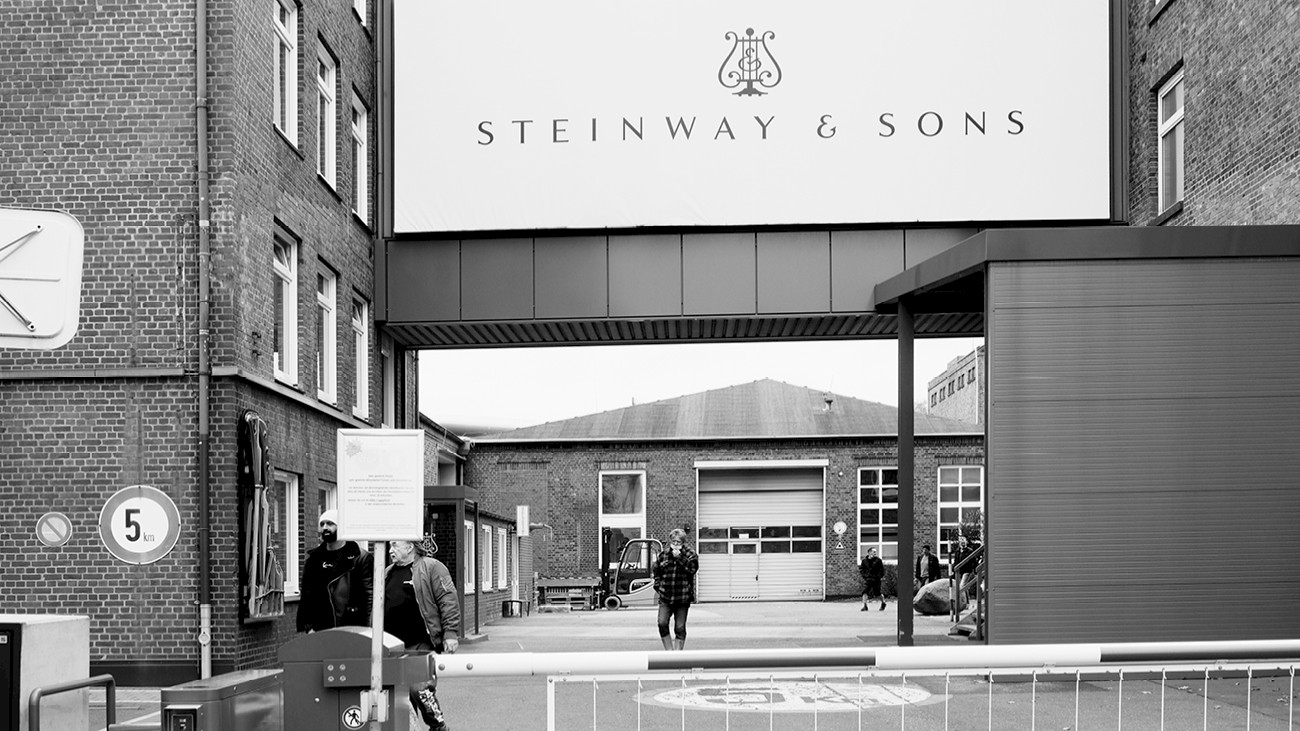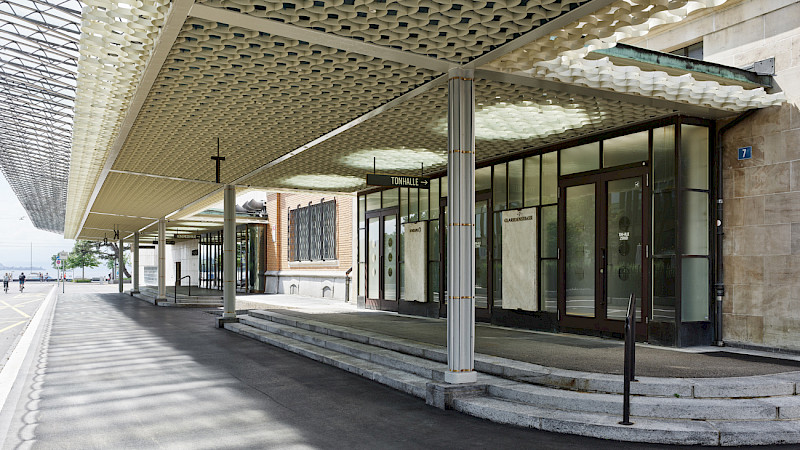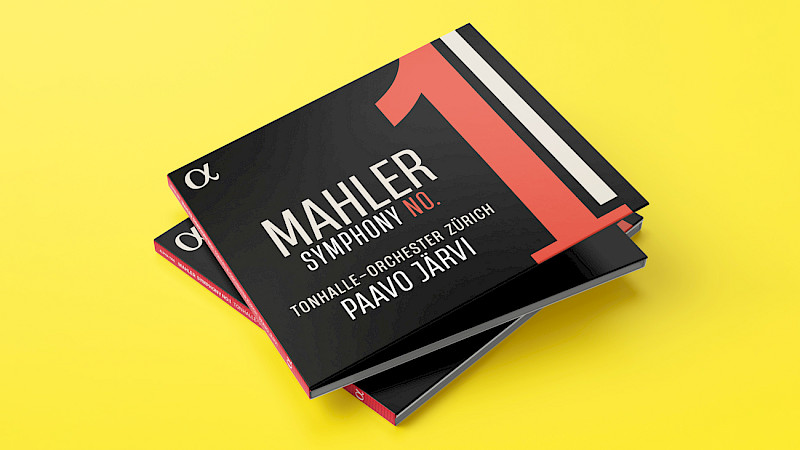
From Board to Sound
The Steinway concert pianos used in the Tonhalle Zürich were built in Hamburg. We visited the traditional factory.
In the beginning, there are only boards. They lie in a draughty brick building, in high stacks, separated from each other by wooden dowels. The air should be able to pass between them, for two years. Then they will have lost about 85 percent of their moisture, and a few more percent will be driven out of them in a drying room - only then can the piano makers from Steinway & Sons begin to turn them into instruments.
Here, in this brick building, the boards in no way betray what they will one day become. The warehouse could belong to some large joinery, and the surroundings don't look like cultural luxury either. We are on the outskirts of northern Hamburg, in the neighbourhood there is a car repair shop, a photo studio, a repair shop for hydraulic equipment.
And yet, even here, in the most unspectacular part of the Hamburg factory, it is clear what makes the Steinway grand pianos so special. Of course, you could put the boards in a heating room right from the start and let them dry much more quickly there; but here they believe in tradition, craftsmanship and the patience that goes with it. Stress is not good for wood either, quality needs time. A lot of time.
Screeching, booming, pounding
A few steps further on, in the next building, it doesn't sound like craftsmanship. In the large production hall, the machines are milling and sanding, screeching, humming, pounding. It seems almost paradoxical that in this noise things are being created that will one day delight the ears; those who work here wear hearing protection. But, says Steinway PR manager Sabine Höpermann, «the machines are only used where they are more precise than humans». Around 80 per cent of the production is still manual work.
Eye work, too, as you can see in the room next to the production hall. Here, spruce is selected for the soundboards, for those components inside the grand pianos that are something like the heart of the instruments. If the soundboard is bad, a good sound will never be produced. The demands on the material are correspondingly high. While in other departments a good half of the dried wood can be used, here around 80 percent is rejected. A knot hole, a small irregularity in the grain - and it is already unusable.
Speaking of wood: six or seven different types are used to build a Steinway grand piano. You can see it in the production hall, for example in the frames that are stacked up here. They are made of up to twenty layers, the dark ones are mahogany, the light ones maple. As if they had always belonged together, they join together in the undulating contour of the grand piano case.
The banal question of how dry wood can be bent is answered in another adjoining room, in the rim bending shop. Music rattles from a radio - not a Debussy prelude, but an Abba song. Otherwise, the radical transformation from straight to curved takes place almost silently: The wood for the rim, as the cabinet is called in technical jargon, is glued (and thus regains its elasticity), then pressed and finally clamped into the mould.
It all happens amazingly fast, barely ten minutes, then the last clamps are tightened. After three hours, they are loosened again, after which patience is called for once more: the casings must now rest for around 100 days until the moisture from the glue has evaporated again. Only then are they ready for further processing.
Perfect technology, perfect image
At this point, at the latest, it becomes clear how complicated the construction of a grand piano is. Around 12,000 individual parts are used, every detail has its reason. It took decades to reach perfection. How much pioneering work the Steinway family has done can be seen in the patents hanging on the walls everywhere. More than 140 have been filed, for ever different construction phases and components.
Parallel to the technology, the image of the instruments also developed. Today, in the public perception, a Steinway is the epitome of a grand piano; the name is sometimes used as a synonym for the instrument. Almost every concert hall has Steinways, and around 97 percent of soloists use these pianos. That's pretty close to a monopoly. From a musical point of view, this can certainly be viewed critically; the tonal diversity was undoubtedly greater in the past than it is today. All the more so because other brands have increasingly oriented themselves towards Steinway technology and the corresponding sound ideal in recent decades.
There are historical reasons for this: After the Second World War, Steinway was the only manufacture that could deliver reliably. This not only gave it an unprecedented presence, but also set standards that soon proved practical. For in today's concert business, the competition and the pressure for perfection are so great that pianists are happy if they do not have to adjust to a different instrument every time they perform. The usual Steinway means one less problem.
In the private sector, the variety is greater. Instruments from historically important manufacturers such as Bösendorfer, Bechstein or Blüthner are still in demand, and newer companies such as Fazioli, Yamaha and Pearl River are also doing well.
Some of them cover all quality levels from entry-level instruments to concert grand pianos, others have specialised - although some of the top companies also participate in the mass market under a different name. Steinway, too, has a brand in the affordable price segment: it is called Essex, is built by Pearl River in China and bears the label "Designed by Steinway & Sons".
Black keys can also be pink
But back to Hamburg, to the original Steinway factory. Here we have now arrived at the department where the cast iron plates are processed to which the strings are attached in the finished instrument. The raw castings, weighing up to 180 kg, are delivered from the company's own American foundry, where they are now processed and polished by hand. A lot of water flows in the process; the employees in this department wear rubber boots.
They are not necessarily piano makers. Steinway & Sons also employs carpenters, joiners and cabinetmakers - mainly men, but the number of women is increasing. Not too fast, though, because the fluctuation is almost record low. Twelve employees with over 50 years of Steinway service are immortalised on the service anniversaries board hanging in the stairwell; they have spent their entire working lives with grand pianos, from apprenticeship to retirement. Many more of the 490-strong Hamburg workforce are well on the way to emulating them.
You can feel it when you walk through the factory: this feeling of being part of something special; the pride of being able to work here. And also the will to fulfil even the most unusual special requests: One of the cast iron plates is currently being fitted into a grand piano for a customer in Dubai, vintage look, soaped walnut. And PR manager Sabine Höpermann tells of a pink grand piano with a butterfly pattern and white and pink keyboard that a father had made for his pubescent daughter.
One can only hope that this daughter's taste in colour will continue after puberty. Because Steinways are expensive: no grand piano can be had for less than 90,000 Swiss francs, and the prices for custom-made instruments are open to the top. This is not surprising, because apart from the necessary resting phases, eight to twelve months of work go into it.
The search for the perfect instrument
The description of all the steps would fill pages accordingly: How the grand pianos are varnished and then polished by hand until the logo inlaid in the wood reappears and the surface shines evenly. How they get their sound when the strings, hammers and keys are installed. How this sound is then refined, readjusted, improved once again, for days. How the grand pianos are finally packed to survive the journey by ship, truck or plane to Zurich, Sydney or Shanghai without damage.
But wait, some of the instruments remain in Hamburg for the time being; we see them at the last stop on the tour, in the selection room: seven Steinways each stand against the walls on the right and left. That's how we know them, the grand pianos; the secrets inside are hidden under the black varnish, and one would almost regret it – if a typical story from the Steinway world did not take place here as well. A Belgian family is rejoicing in this very selection room. The junior has been testing the grand pianos for hours, and now the decision has been made: on the first instrument he tried out.
A decision for life
It is – visibly – an unusual moment for the family. Usually, the selection room is only open to representatives of institutions or professional musicians; private individuals have to sign a purchase contract before they can come to the manufactory in their search for the perfect instrument.
Some of them hire professionals for this selection; those who can afford a Steinway do not embarrass themselves with a bumpy "Für Elise" when testing a grand piano. Moreover, it takes trained ears and fingers to detect the nuances in touch and sound that distinguish different pianos of the same model. And it's not as if one instrument would soon be replaced by another: a Steinway is usually a lifetime purchase, at least for amateur musicians.
«We only see most of these customers once,» says PR manager Sabine Höpermann after we have said goodbye to the Belgian family. In any other industry, this sentence would be considered a disaster. At Steinway & Sons, they say it with pride: what was just a pile of boards three years ago has become an instrument that will most likely outlive its owner.
Translated with DeepL.com
Steinway & Sons - History of a company
The history of Steinway & Sons began with strokes of fate. Heinrich Engelhard Steinweg, born in Wolfshagen in the Harz Mountains in 1797, had lost his entire family in the war and to a lightning strike; at the age of 15, he had to get by on his own. He did it as a cabinetmaker and by repairing organ pipes - and began to take an interest in the fortepiano, which was increasingly in demand at the time. At the age of 39, now a father of ten, he built his first grand piano in his kitchen. Others followed, which soon received awards.
As a result of the revolution of 1848, Heinrich E. Steinweg emigrated with his extended family to New York; as Henry E. Steinway he founded his manufactory there in 1853. The company grew rapidly and continued to expand even after his death in 1871; the sons and daughters complemented each other perfectly as piano makers, financial specialists and marketing talents. in 1880, they secured their position in Europe by founding the Hamburg manufactory. It was not until the 20th century that there were crises: The Great Depression in the 1930s caused business to slump, and during the Second World War, grand piano building was banned because the materials were to be used for war equipment; Steinway & Sons produced gliders, rifle butts and coffins during these years.
in 1972, the Steinway family sold the company to Columbia; after several intermediate sales, it has belonged to the American investment company Paulson & Co since 2013: it had paid 512 million dollars for the company. Since then, developments have been initiated, especially in digital technology: The «SPIRIO | r» model can play back interpretations in self-playing technique; since October 2022, these pianos can also stream interpretations live from elsewhere.
Facts & Figures
- There are only 2 Steinway factories: in New York (since 1853) and in Hamburg (since 1880).
- It takes 3.5 years to train as a piano maker.
- 8 Steinway models are produced: 7 grand pianos and one upright.
- The longest Steinway grand piano measures 274 cm, the shortest 155 cm.
- The most popular length for private owners is 211 cm.
- Around 1400 grand pianos and 300 uprights have been produced in Hamburg on average in recent years; a third of the production goes to China, and the trend is rising.
- On average, 50 per cent of Steinway grand pianos are bought by concert halls and music academies , the rest go to professional and other musicians*.
- Steinway grand pianos are available in different colours and with different wood veneers. However, the proportion of traditional black lacquered instruments in the Hamburg manufacture still amounts to over 90 percent.
- Steinway & Sons have filed over 140 patents.
- Around 12,000 individual parts go into a concert grand piano.
- The cast iron plates inside the grand piano have to withstand a tensile load of up to 20 tonnes.
- In 1989, Steinway & Sons became the first major grand piano manufacturer to abandon the use of ivory; since then, the keys have been made of plastic.
- The 150th anniversary in 2003 was celebrated, among other things, with a special edition designed by Karl Lagerfeld.

















